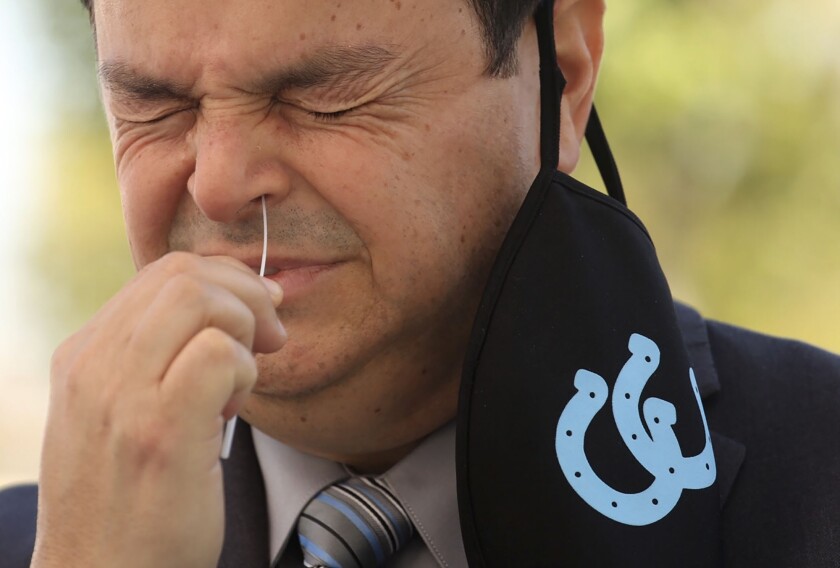 SACRAMENTO, Calif.— As one of California’s largest oil producers enters bankruptcy, the Center for Biological Diversity and Sierra Club today urged Gov. Gavin Newsom to prevent California Resources Corporation and other troubled oil companies from shirking legal obligations to clean up their wells and prevent pollution. CRC filed for Chapter 11 bankruptcy on Wednesday.
SACRAMENTO, Calif.— As one of California’s largest oil producers enters bankruptcy, the Center for Biological Diversity and Sierra Club today urged Gov. Gavin Newsom to prevent California Resources Corporation and other troubled oil companies from shirking legal obligations to clean up their wells and prevent pollution. CRC filed for Chapter 11 bankruptcy on Wednesday.
Today’s letter calls on the governor to intervene in CRC’s bankruptcy proceedings to ensure the company sets aside enough money for well cleanup. CRC and its affiliates operate approximately 18,700 wells in California, which could cost more than $1 billion to properly plug, according to the Institute for Energy Economics and Financial Analysis. Of these, 7,826 are already “idle,” which means they’ve produced little to no oil in the past two years.
“Bankruptcy proceedings like these endanger California because oil companies like CRC can weaponize them to dump their environmental cleanup costs on the public,” said Kassie Siegel, an attorney at the Center for Biological Diversity. “Given the huge number of wells at stake, the Newsom administration should intervene quickly to protect the public from those costs and our environment from pollution. More big oil bankruptcies are coming, and Gov. Newsom has a responsibility to be ready.”
“CRC’s bankruptcy is likely just the first of many as the oil industry inevitably declines in California. Gov. Newsom has the tools to protect the public from Big Oil, but so far he hasn’t used them,” said Kathryn Phillips, director of the Sierra Club California. “It’s critical that Gov. Newsom ensure that failing oil companies are held accountable for cleaning up their own mess, rather than leaving taxpayers and workers to pay the price.”
Although oil companies are required to pay for the cost of properly plugging and abandoning wells, they have not set aside nearly the amount required for remediation. Statewide, the California Council on Science and Technology estimates that cleaning up California’s approximately 107,000 oil and gas wells would cost over $9.2 billion, yet the bonds that are supposed to cover these costs total only about $107 million.
Today’s letter also urges Gov. Newsom to take proactive steps to protect the public and the environment in anticipation of a likely wave of future oil and gas bankruptcies. These steps include:
- Increasing and accelerating well plugging and abandonment requirements to reduce air and water pollution and create jobs.
- Increasing bond requirements to ensure that oil and gas companies set aside enough financial resources to cover the full costs of remediation even if they become insolvent.
- Ensuring that the oil and gas industry as a whole – not taxpayers –funds the remediation of truly “orphaned” wells, by increasing the administrative fee on well owners as needed.
- Avoiding the accrual of additional well cleanup costs by halting approvals and permits for new oil and gas activity, including new wells and fracking permits.
- Taking steps to ensure that oil and gas companies satisfy their obligations to workers by honoring their pension and healthcare commitments.
Despite the dire outlook for the company, Newsom has continued to issue CRC new permits to drill wells. State oil regulators have issued CRC and its affiliates permits to drill nearly 300 new wells so far this year, including 27 new permits in just the first week of July, all without conducting environmental review required by law. Newsom has approved this expansion of drilling operations despite CRC’s long record of violating safety and environmental regulations.
“As other companies flirt with insolvency, the governor should accelerate well remediation by solvent operators, increase bonding levels on existing wells, and stop digging the hole deeper by handing out new drilling permits,” said Siegel. “Forcing companies to clean up their own messes would create jobs, keep the public safe from unattended wells and make sure polluters are the ones paying for cleanup.”
Statewide, Newsom has issued 1,500 drilling permits for new wells so far this year. He also lifted a moratorium on fracking by authorizing 360 new fracking events over the past few months.
In 2014, CRC was created as a spin-off by Occidental Petroleum and took over Occidental’s California oil and gas wells. Since then, CRC has performed poorly, earning “junk bond” status from ratings agencies. CRC blamed the coronavirus pandemic and economic downturn for the bankruptcy, but CRC was at high risk of bankruptcy even before these events, as detailed in a report from the Institute for Energy Economics and Financial Analysis.
- Kassie Siegel, Center for Biological Diversity, ksiegel@biologicaldiversity.org, (951) 961-7972
- Kathryn Phillips, Sierra Club, Kathryn.Phillips@sierraclub.org, 916-893-8494




You must be logged in to post a comment.